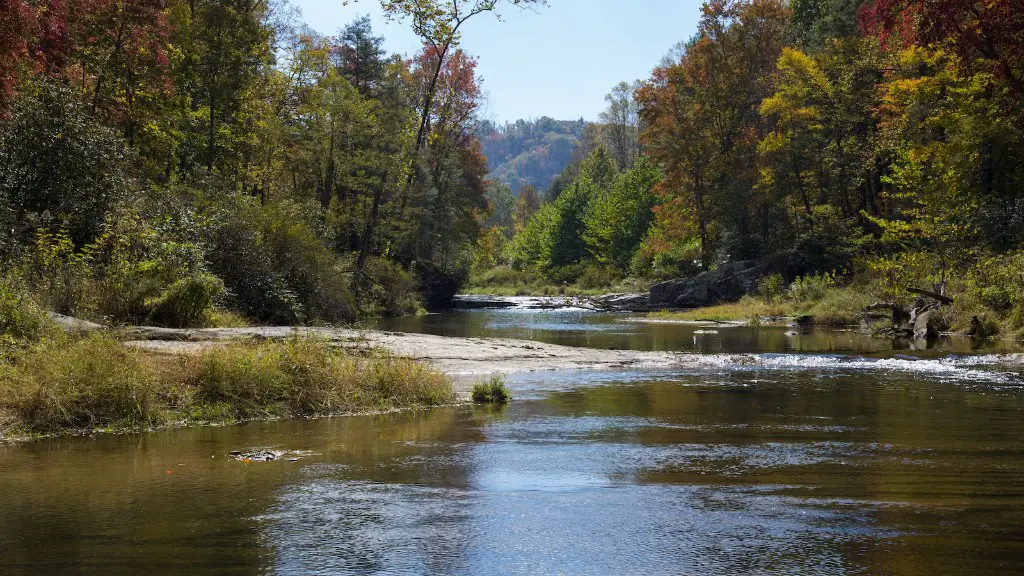Where is the Headwaters of the Mississippi River?
The headwaters of the Mississippi River are located in Lake Itasca, Minnesota in the United States of America. Itasca is an English corruption of the Latin word for truth, veritas. The Mississippi River is the second longest river in the United States, stretching some 2,320 miles from Lake Itasca to the Gulf of Mexico in Louisiana. Along this enormous course, the river supports vast amounts of flora, fauna, and human life, while providing a unique and invaluable source of water.
The Mississippi River begins as a tiny stream in Lake Itasca and is fed by a number of small tributaries that all eventually empty into the lake. From there, the river gradually expands and winds through much of the American Midwest. Lake Itasca, the source of the Mississippi River, itself is only about 1.2 square miles. This relatively small area captivates the interest of millions each year who come to witness the simple headwaters of one of the world’s grand rivers.
The headwaters of the Mississippi River were a mystery for several centuries and various theories existed as to the river’s origin. The first documented exploration of the area was in 1832 when Henry Rowe Schoolcraft and Edwin James, two early explorers of the era, discovered Lake Itasca as the source. In 1891, the Minnesota state legislature and schoolchildren raised enough money to purchase the land around Lake Itasca and designate it as a state park. Since then, the park has been recognized as one of America’s National Natural Landmarks.
The Mississippi River is an incredibly powerful force, and its headwaters situated in Lake Itasca provide just the slightest of indications of the river’s extraordinary potential. As the river winds its way across the country, it swells with water from thousands of tributaries, cutting deep valleys and creating a rich diversity of natural resources. The ecosystem of the Mississippi River is complex and diverse, as is its geography, and there are numerous species of plants and animals living within its reaches.
The Mississippi River is also an important economic resource, providing a variety of goods and services to the people who live along its banks. The river is heavily utilized for navigation, agriculture, power generation, fishing, and recreation. Over 16 million people rely on the river for drinking water, and over 10 million tons of freight originate from its waters each year.
The Mississippi River is an important part of American history, providing a lifeblood to many of its cities and regions. By visiting Lake Itasca, one can bear witness to this special birth of the mighty Mississippi and gain insight into the river’s power, beauty, and importance.
The Environmental Implications of the Mississippi River
Not only does the Mississippi River offer economic and social benefits, but it is also home to multiple and varied ecosystems. This river ecosystem is home to everything from small aquatic insects to magnificent wild animals, such as beavers, bald eagles, and white-tailed deer. Furthermore, it serves as a spawning ground for commercially important species such as walleye, catfish, and sturgeon.
The environmental implications of the Mississippi River span far and wide. Due to the high number of pollutants like nitrogen and phosphorus coming from agricultural fertilizer runoff and wastewater discharges, the Mississippi River has been subject to large algal blooms, hypoxia which has resulted in the death of fish, and eutrophication which can cause whole sections of the river to deplete of oxygen. In order to combat these implications, many agencies, such as the EPA, are making efforts to reduce the amount of pollutants being placed into the river.
The U.S. Army Corps of Engineers has a significant role in managing the Mississippi River, through activities such as maintaining and operating many of the locks and dams along its course. The sediment load in the river can also be managed by controlling upstream water systems, such as by building levees. Erosion along the banks of the Mississippi River can also be managed by planting vegetation and providing other environmentally sustainable techniques.
Though the Mississippi River has had many environmental setbacks, there have been many attempts to restore the river’s ecosystem and minimize the amount of pollution entering it. The public is becoming more aware of the importance of the Mississippi River and efforts like the “River Rescue” project have helped to increase awareness among river enthusiasts and communities.
The History and Relevance of the Mississippi River
The history and relevance of the Mississippi River cannot be understated. It has often been the defining feature of communities living along its banks. Native Americans were first to inhabit the region between the Great Lakes and the Gulf of Mexico and were critical to developing early trade connections and alliances. The French laid claim to the entire Mississippi region in 1682, although the early American presence had already been established in some of the port cities. The river has fueled much of the American commerce and industry since its discovery in the seventeenth century.
The Mississippi River was often the most reliable overland pathway connecting towns and cities to distant markets, allowing goods to be shipped quickly and economically. It was also used to transport raw materials and goods downstream from their source to ports of distribution.Mark Twain’s adventures on the Mississippi River were critical to the formation of the American imagination. The Mississippi River was the driving force behind the building of the American heartland and has shaped the geography of the entire United States.
Modernly, the Mississippi River is a key economic resource for the United States for industries such as transportation, energy, agriculture, tourism, and recreation. The river also plays a big role in flood control and irrigation projects. The many dams and levees built along the course since the turn of the twentieth century have helped to protect the downstream areas from flooding. The Mississippi River has also been used to develop new technologies such as sustainable energy resources and renewable energy projects.
The Themes of the Mississippi River
The Mississippi River has been the source of numerous themes throughout its history. The first is that of exploration and adventure. The old explorers with their wooden boats, covered wagons, and ambitious dreams seemed to be able to reach anywhere they desired. By traveling along the Mississippi, they discovered a vast new world with hidden secrets and opportunities.
The second is one of economic and social development. The Mississippi River served as the main line for travelers and trade for much of the pre-industrial United States. Its course linked the American Midwest from coast to coast. The river’s contribution to the development of the country was enormous and its banks were lined with workers, settlers and migrants, all looking to make a new life in the Wild West.
The third theme found in the Mississippi River is that of tragedy and loss. With the introduction of colonialism and the slave trade, the Mississippi River became a route for sorrow and despair. The river was a battlefield for settlers, Native Americans, and African slaves, caught between forces of progress and change.
Today, the Mississippi River serves as a major source of life and provides food, clean water, and transportation to its multitude of inhabitants. Its past, while filled with tragedy and triumph, has given way to a diverse and complex ecosystem and helped to form the heart of America’s imagination and culture.
The Future of the Mississippi River
The scale of the Mississippi River can sometimes overshadow the fact that it is a living, breathing organism affected by its environment. The future of the river will be shaped by the actions of our society and how we respond to the challenges that lie ahead.
The importance of restoring the river’s flow and reducing sedimentation and other pollutants cannot be overstated. The future of the Mississippi River also depends on how we manage the water and how we respond to the challenge of an increasing population and its demand for resources.
The development of renewable energy technology has the potential to be a game changer for the river’s future. Harnessing the energy of the river can provide clean power and reduce the amount of fossil fuels being burned. Additionally, agroecological practices and soil conservation can help reduce the amount of sediment laden runoff and help improve the water quality.
Future generations of Americans will have to rise to the challenge of ensuring the river’s sustainability not just for its own sake, but also because of the positive impacts it provides to the local communities and economies. Despite its immense size, the Mississippi River is fragile and needs to be looked after carefully if it is to serve as the lifeblood of our great nation in the future.
Conclusion
As one of the premier rivers in the United States, the Mississippi River plays a massive role in our economy, environment, culture, and history. Its source, located in Lake Itasca, is tiny yet mighty, showing a glimpse of the wonders that lie ahead for centuries to come. In order to ensure its sustainability for generations to come, we must manage its resources carefully, reduce the amount of pollutants entering it, and develop eco-friendly projects to harness its energy. The Mississippi River will continue to be a vital source of life for many if we do this and practice sound management techniques.





